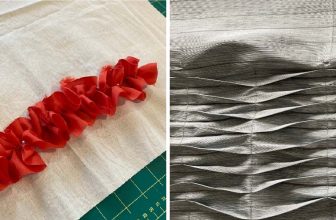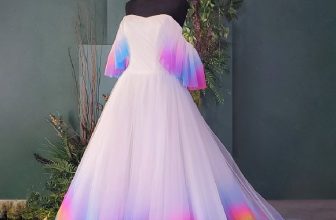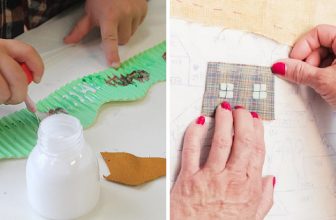How to Serge Fabric
If you’ve ever looked at a garment label and seen the word “serged,” you might have wondered what that meant. In short, serging is a type of stitching that’s used to finish the raw edges of the fabric.
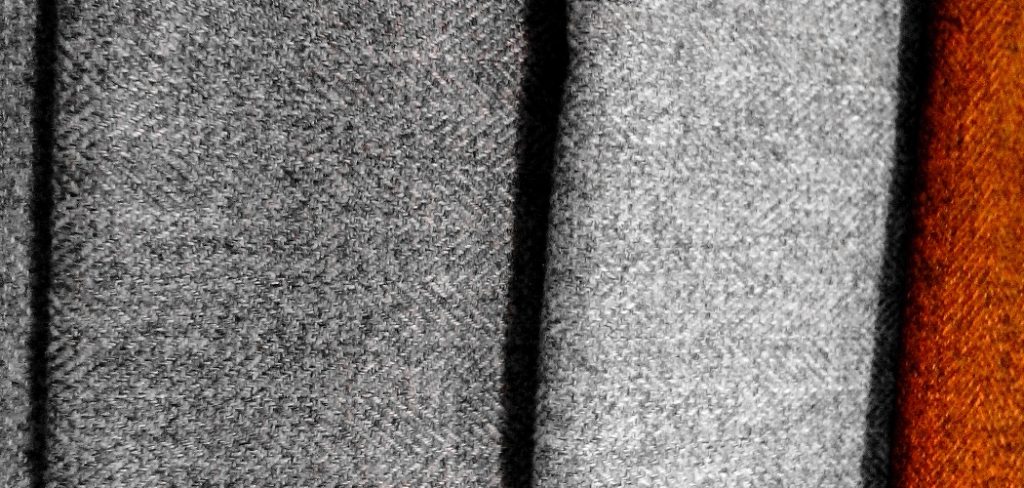
It’s strong and durable, making it ideal for garments with a lot of wear and tear. Plus, it has a professional look that can take your sewing projects to the next level.
In this blog post, we’ll show you how to serge fabric using a serger machine. We’ll also give you tips on getting the best results. So keep reading!
Can You Serge Fabric?
While most people know that a serger can be used to finish the raw edges of a garment, many are surprised to learn that it can also be used to stitch together two pieces of fabric. When serging fabric, it is important to use the right type of thread and needle. A lightweight polyester thread is ideal, as it will not add bulk to the seam.
The needle should also be designed for use with lightweight fabrics. In addition, it is important to use the correct stitch settings. The tension should be set fairly loose, and the stitch length should be set shorter than normal. With these settings, the serger will create a small zigzag stitch that holds the fabric together without adding bulk.
When serging two pieces of fabric together, it is best to start at one end and work your way along the edge until you reach the other end. Once you have reached the end, you can trim away any excess thread. By following these steps, you can successfully serge two pieces of fabric together.
Why Should You Serge Fabric?
When most people think of sewing, they picture a neatly stitched seam. However, the process of creating a garment or other item is much more complex than simply stitching two pieces of fabric together. In order to create a professional-looking finished product, it is often necessary to serge fabric.
Serging is a type of stitching that helps to finish the raw edge of the fabric and prevent it from fraying. It is often used on lightweight or delicate fabrics that are difficult to hem.
In addition, serging can be used to create decorative edges on pillows, blankets, and other items. While it is possible to sew a garment without serging the fabric, doing so can result in an unfinished look.
In order to serge fabric, you will need a serger machine. These specialized sewing machines use multiple threads and knives to create a clean, finished edge.
While sergers can be expensive, they are an essential tool for any serious sewer. So if you plan on doing any serious sewing, it is worth investing in a good quality serger machine.

7 Steps to Follow on How to Serge Fabric
Step 1. Choose the Right Type of Fabric.
The first step in learning how to serge fabric is choosing the right fabric type. The best fabrics for serging are those that are lightweight and have a smooth surface. Avoid using fabrics that are too thick or have a lot of texture, as these can be difficult to work with.
Step 2. Pre-Wash the Fabric.
Before you begin serging, it is important to pre-wash the fabric. This will help to remove any chemicals or finishes that may be on the fabric and will also help to shrink the fabric so that it is easier to work with.
Step 3. Cut the Fabric Into Strips.
Once you have pre-washed the fabric, cut it into strips that are about 1-2 inches wide. It is important to make sure that all of the strips are the same width so that they will serge evenly.
Step 4. Serge the Fabric Strips Together.
To begin serging, feed the fabric strips through the machine so that they are aligned evenly. Start at one end of the strip and slowly guide it through the machine, using your fingers to guide it along. As you serge, be sure to keep a consistent tension on the fabric so that it feeds through evenly.
Step 5. Trim Away Any Excess Fabric.
Once you have finished serging, trim away any excess fabric from the edges of the strips. You can use scissors or a rotary cutter to do this. Be sure to leave a small seam allowance so that you can sew the strips together later on.
Step 6. Sew the Strips Together.
After you have trimmed away any excess fabric, sew the strips together using a sewing machine or by hand stitching them together. Be sure to use a strong stitch so that the seams do not come apart later on.
Step 7. Finish Off the Edges with Bias Binding Tape or Ribbon (optional).
If you want, you can finish off the edges of your serged fabric with bias binding tape or ribbon. This is not necessary, but it can give your project a nice, finished look.
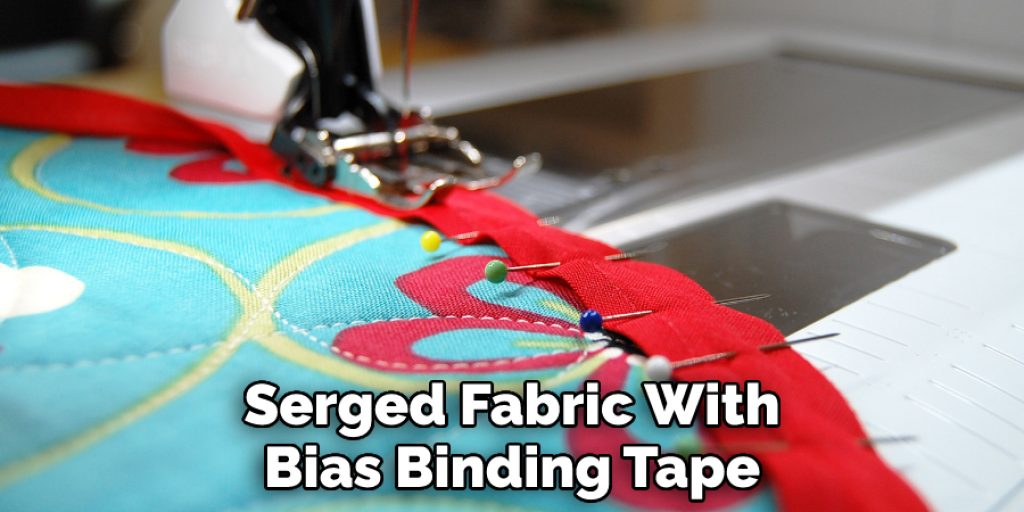
Now you know how to serge fabric! This technique is perfect for making garments, quilts, and other projects that require neat, even edges. With a little practice and patience, you’ll be able to create beautiful pieces with your serger in no time.
Things You Need to Know Before Serge Fabric
Serge is a kind of fabric that is often used for making clothing and other textile products. It is made from a variety of different fibers, including cotton, wool, and polyester. Serge fabric is known for its durability, strength, and ability to resist wrinkles.
When Shopping for serge fabric, it is important to keep in mind that there are different types available. For instance, Wool serge is a type of fabric that is made from woolen yarns. It is heavier than other types of serge, making it ideal for winter wear.
Cotton serge, on the other hand, is made from cotton yarns. It is a lightweight fabric that is often used for summer clothing. Polyester serge is another popular type of serge fabric. It is made from synthetic fibers, making it more affordable than other types of serge.
When selecting a type of serge fabric, it is important to consider the purpose for which it will be used. For instance, Wool serge is a good choice for winter clothing because it is warm and durable. On the other hand, cotton serge is a good choice for summer clothing because it is lightweight and breathable.
Polyester serge is a good choice for general-purpose use because it is strong and wrinkle-resistant. Serge fabric can be purchased from most fabric stores. It is also available online from a variety of different retailers. When shopping for serge fabric, comparing pricing and shipping costs is important before making a purchase.
Serge fabric can be an excellent choice for a variety of different projects. With its durability and wrinkle-resistance properties, it can help to create long-lasting garments and textile products.

Benefits of Serge Fabric
Serge fabric is a type of woolen material that was traditionally used for making military uniforms. Serge is made by weaving together two sets of fabric, which creates a distinctive ribbed appearance. The fabric is known for being strong, durable, and resistant to wrinkles and creases.
Serge fabric is also relatively easy to care for, as it can be machine washed and dry-cleaned. These properties make serge an ideal choice for a wide range of garments, from suits and jackets to skirts and dresses. In addition, serge fabric is often used for upholstery, as it can add a touch of luxury to any room.
Whether you’re looking for a durable fabric for your next piece of clothing or want to add something extra to your home décor, serge fabric may be a perfect choice.
Some Common Mistakes People Make When Trying to Serge Fabric
Many people enjoy the look of serged fabric, but they may not realize how easy it is to achieve this professional finish at home. However, people make a few common mistakes when they first learn how to serge fabric. The most important thing to remember is that the fabric must be properly tensioned.
Otherwise, the stitches will be loose and uneven. Additionally, the blades must be sharp to create a clean cut. Finally, it is important to use the correct needle size for the type of fabric being serged. By following these simple tips, anyone can produce beautiful serged fabric.
How to Serge Fur Fabric Pieces
Serging is a type of sewing that uses an overlock stitch to finish the raw edges of the fabric. This technique is often used on fur fabric, as it helps to prevent the fur from fraying and coming loose. When serging fur fabric, it is important to use a narrow zigzag stitch.
This will help keep the fur in place while allowing the fabric to stretch and move. In addition, it is important to use a sharp needle when serging fur. This will help to prevent the needle from snagging on the fur and causing Damage. With these tips in mind, serging fur fabric pieces can be quick and easy.
Conclusion
Serging is a type of stitching that’s used to finish the raw edges of the fabric. It’s strong and durable, making it ideal for garments with a lot of wear and tear. Plus, it has a professional look that can take all sorts of sewing projects up a notch. In this blog post, we showed you how to serge fabric.
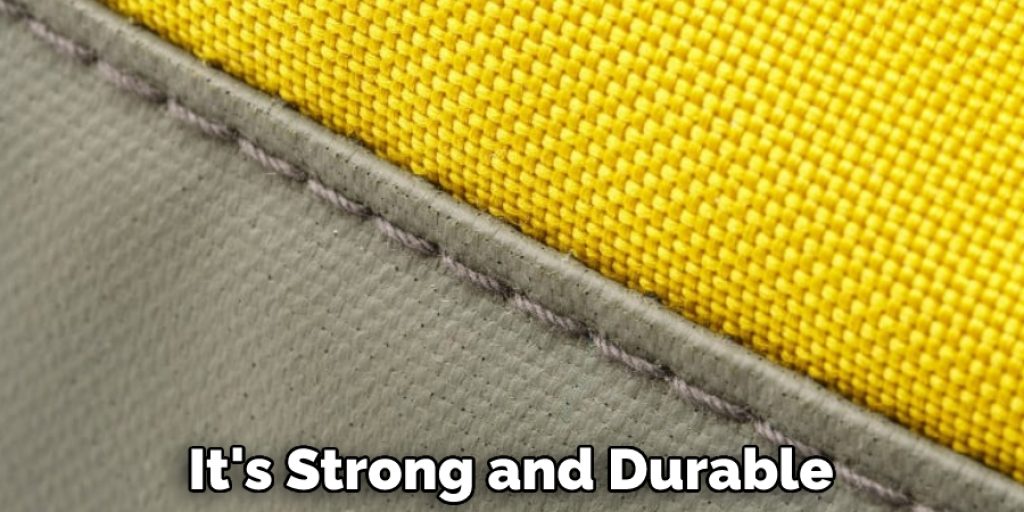
We also gave you some tips on how supplemental materials are needed as well as helpful visual aides included to make sure your project looks clean and professional when completed following our guide exactly!

